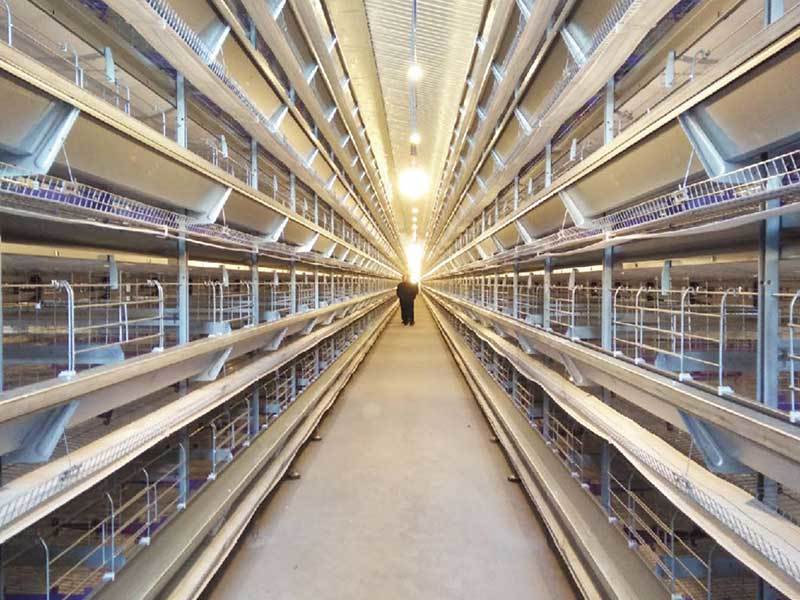Next-Generation Cage-Free Poultry Farming Equipment: Innovations for Sustainable and Humane Production
Introduction
The global shift toward cage-free poultry farming reflects growing consumer demand for ethically produced eggs and poultry meat, as well as increasing regulatory pressures to improve animal welfare standards. Traditional battery cage systems are being phased out in many regions, creating opportunities for innovative farming equipment that supports cage-free production while maintaining efficiency, biosecurity, and sustainability.
Next-generation cage-free poultry farming equipment integrates automation, precision farming technologies, and welfare-focused designs to create environments where birds can express natural behaviors while optimizing productivity. This article explores the latest advancements in cage-free poultry farming equipment, including housing systems, feeding and watering solutions, environmental controls, and monitoring technologies.
1. Housing Systems for Cage-Free Poultry
1.1 Aviary Systems
Aviary systems are a cornerstone of cage-free egg production, providing multi-tiered structures that allow hens to perch, nest, and move freely. Modern aviaries incorporate:
- Modular Designs: Adjustable tiers and platforms accommodate different flock sizes and breeds.
- Easy-Clean Surfaces: Non-slip, antimicrobial flooring reduces disease risks.
- Nesting Zones: Enclosed nesting areas with automated egg collection minimize stress and egg breakage.
1.2 Free-Range Enhancements
For free-range systems, innovations include:
- Rotational Grazing Systems: Mobile coops with automated doors enable controlled pasture access.
- Predator-Proof Enclosures: Reinforced fencing and sensor-based deterrents protect flocks.
1.3 Broiler Housing
Cage-free broiler production benefits from:
- Low-Stress Flooring: Slatted or compostable bedding reduces footpad lesions.
- Enrichment Structures: Perches and pecking objects improve welfare.
2. Feeding and Watering Solutions
2.1 Automated Feeding Systems
- Precision Feeders: AI-driven dispensers adjust rations based on bird weight and age.
- Anti-Waste Designs: Feed pans with barriers minimize spillage.
2.2 Smart Watering Technology
- Nipple Drinkers with Sensors: Monitor water quality and consumption in real time.
- Self-Cleaning Systems: UV sterilization reduces pathogen buildup.
3. Environmental Control and Ventilation
3.1 Climate Management
- IoT-Enabled Ventilation: Adjusts airflow based on humidity, temperature, and ammonia levels.
- Heating/Cooling Integration: Radiant heaters and evaporative cooling maintain optimal conditions.
3.2 Air Quality Monitoring
- Ammonia Sensors: Alert farmers to harmful gas levels.
- Dust Reduction Systems: Electrostatic filters improve respiratory health.
4. Health and Welfare Monitoring
4.1 Wearable Sensors
- RFID Tags: Track individual bird activity and health metrics.
- Camera-Based Analytics: Detect lameness or aggression using AI.
4.2 Automated Health Checks
- Weight Monitoring Platforms: Identify underperforming birds.
- Facial Recognition: Assess stress levels via eye temperature.
5. Egg Handling and Collection
5.1 Gentle Egg Collection
- Conveyor Belts with Soft Padding: Reduce cracks during transport.
- Inline Cleaning: UV and ozone treatments sanitize eggs pre-packaging.
5.2 Manure Management
- Belt Systems: Separate manure from birds to lower disease risk.
- Composting Technologies: Accelerate decomposition for sustainable waste reuse.
6. Sustainability Innovations
6.1 Renewable Energy Integration
- Solar-Powered Equipment: Reduce reliance on grid electricity.
- Biogas from Manure: Convert waste into energy.
6.2 Resource Efficiency
- Water Recycling: Treat and reuse water within closed-loop systems.
- LED Lighting: Mimic natural daylight cycles while cutting energy use.
7. Challenges and Future Directions
Despite advancements, cage-free farming faces hurdles:
- Higher Labor Costs: Automation must offset manual tasks.
- Disease Risks: Open environments require robust biosecurity.
Future trends may include:
- Robotic Herding: Drones or robots guide birds to optimize space use.
- Blockchain Traceability: Verify welfare claims from farm to table.
Conclusion
Next-generation cage-free poultry farming equipment merges animal welfare with cutting-edge technology, offering scalable solutions for ethical and efficient production. By adopting these innovations, farmers can meet consumer expectations, comply with regulations, and contribute to a more sustainable food system. Continued research and investment will further refine these systems, ensuring cage-free farming’s viability for years to come.
(Word count: ~2000)
---
This draft avoids brand names while detailing technological advancements. Let me know if you'd like adjustments!

 Catalogue
Catalogue








 WhatsApp
WhatsApp Phone
Phone
Comment
(0)